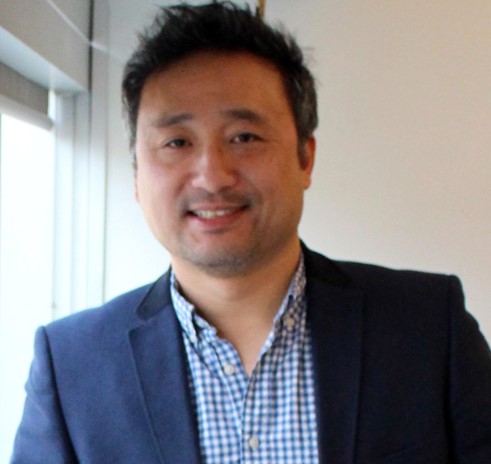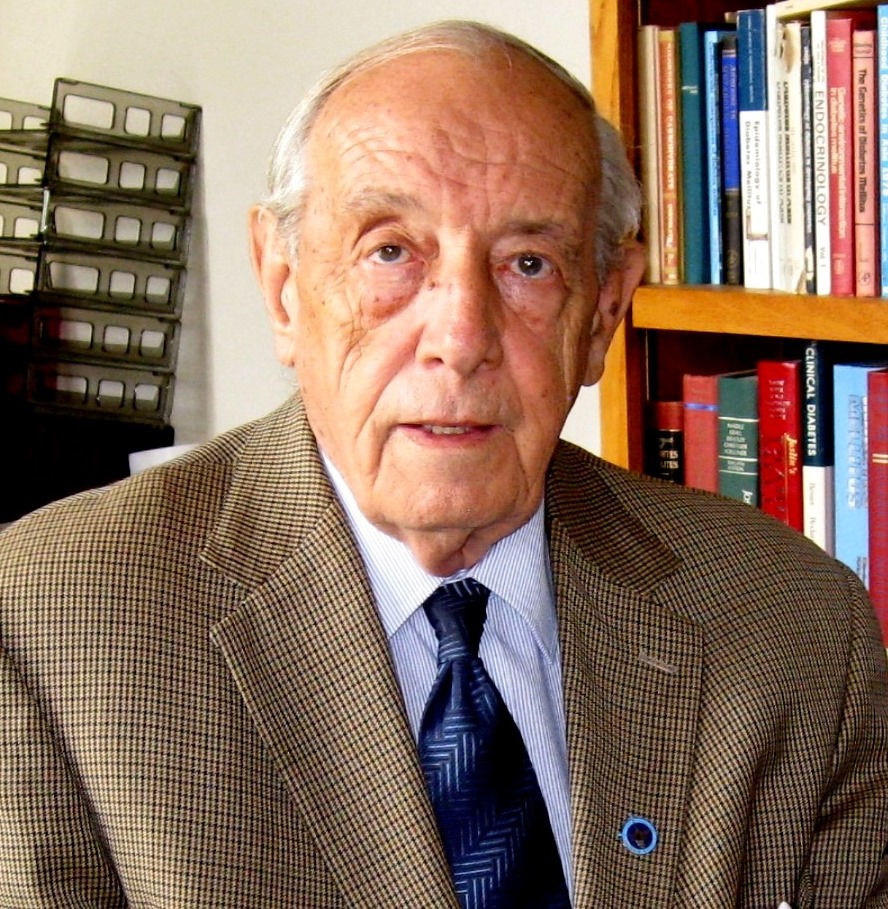Venue: Seminar Rooms 2 & 3, 1/F, Jockey Club School of Public Health, Prince of Wales Hospital, Shatin, New Territories
|

|
Biosketch of Professor Lam
Dr Tony Lam, PhD is a Professor of Physiology and Medicine at the University of Toronto. He holds the John Kitson McIvor (1915-1942) Endowed Chair in Diabetes Research, Tier 1 Canada Research Chair in Diabetes & Obesity, and is the co-director of the Banting and Best Diabetes Centre, University of Toronto. He is also a Senior Scientist at the Toronto General Hospital Research Institute. The Lam laboratory has been investigating the mechanisms underlying the regulation of food intake, body weight, and glucose and lipid homeostasis in obesity and diabetes.
|
|
The main focus has been to elucidate nutrient and hormone sensing mechanisms in the gut, kidney and the brain that regulate glucose, lipid and energy homeostasis. Recently, the lab has discovered that changes in gut microbiome as well as the kidney function regulate feeding, body weight and glucose homeostasis. In summary, the discoveries reveal molecular targets in the kidney, gut and the brain that carry therapeutic potential to lower body weight as well as blood glucose and lipid levels in diabetes and obesity. Dr. Lam has been awarded the Endocrine Society Richard E. Weitzman Memorial Laureate Award and the Canadian Diabetes Association-CIHR/INMD Young Scientist Award. He has also delivered the Simon Pierre Noel Award Lecture, the Meites Lecture, and the Bela Issekutz Jr Lecture, served as a consultant/speaker bureau for AstraZeneca, Eli Lilly, Merck, Novo Nordisk & Takeda, and was appointed an Advisory Board Member of Keystone Symposia and the Canadian Institutes of Health Research (CIHR). The Lam lab has been funded by CIHR continuously since 2007.
Registration: Online registration is required.
Enquiries: Amy Ngao
Hong Kong Institute of Diabetes and Obesity l Tel: 2647-8806 l Email: hkido@cuhk.edu.hk
|
CUHK Medicine 35th Anniversary Distinguished Lecture Series on Diabetes
Date: 8 May 2017 (Monday)
Time: 12:30pm - 2:00pm (Lunch will be served from 11:45am)
Venue: Kai Chong Tong, The Jockey Club School of Public Health and Primary Care, Prince of Wales Hospital, Shatin, New Territories
Distinguished Speakers:
Professor Rury Holman, Professor of Diabetic Medicine, Oxford Centre for Diabetes, Endocrinology and Metabolism, Radcliffe Department of Medicine, University of Oxford, U.K.
Professor Philip Clarke, Professor of Health Economics, Melbourne School of Population and Global Health, The University of Melbourne, Australia
|
Professor Rury Holman
The legacy of the United Kingdom Prospective Diabetes Study
12:30pm – 1:15pm
The United Kingdom Prospective Diabetes Study (UKPDS) demonstrated for the first time that improved glycaemic control could reduce the risk of microvascular complications in type 2 diabetes, as had been shown by the Diabetes Control and Complications Trial (DCCT) for type 1 diabetes.
|

|
|
Subsequently, the UKPDS 10-year post-trial monitoring study identified the “legacy” effect of earlier improved glycaemic control on diabetic complications, and demonstrated for the first time that improved glycaemic control could reduce the risk of macrovascular complications as well as all-cause mortality. The beneficial impact of improved glycaemic control on fatal and non-fatal myocardial infarction rates was confirmed by the CONTROL collaboration 5-year meta-analysis of the ACCORD, ADVANCE, VADT and UKPDS trials.
The UKPDS demonstrated that sulfonylureas were as effective as insulin in the prevention of late complications and cardiovascular events, with no excess cardiovascular mortality with either agent as had been suggested by the University Group Diabetes Program (UGDP) trial. A major and unexpected UKPDS finding was that primary randomisation to metformin significantly and substantially reduced the risks of cardiovascular and all-cause mortality in overweight subjects. Initial concerns about a small UKPDS sub-study showing possible increased risks when metformin was added to sulfonylurea therapy were assuaged by the 10-year post-trial monitoring data where the effect was greatly diminished and no longer statistically significant. Using a factorial design the UKPDS also demonstrated that improved blood pressure control reduced the risk of diabetic retinopathy and nephropathy, and that the beneficial effects of improved glycaemic control and improved blood pressure control were additive.
With the number of people worldwide with diabetes predicted to exceed 642 million by the year 2040 [IDF Atlas Seventh Edition], it is gratifying to know that post-UKPDS will have evidence-based therapies that can reduce morbidity, prolong lives, and diminish the risks of blindness and kidney failure.
Biosketch of Professor Holman
Rury Holman trained in medicine at the University of Bristol in the United Kingdom and was appointed as the first Professor of Diabetic Medicine at the University of Oxford in 1998. He is the Director of the University of Oxford Diabetes Trials Unit (which he instituted in 1985), Honorary Consultant Physician to the University of Oxford NHS Hospitals Trust, and the founding Academic Chairman of the Oxford Centre for Diabetes, Endocrinology and Metabolism (OCDEM). He is a Fellow of the Academy of Medical Sciences, an NIHR Senior Investigator, and the Diabetes Theme Leader for the Oxford Biomedical Research Centre. He runs an active Translational Research Group undertaking academic-led early phase trials of novel therapeutic agents, new medical devices and complex interventions. He is also Joint Chair of EXSCEL and TECOS, and Chief Investigator of ACE and UKPDS.
Professor Holman divides his time between clinical care of patients, teaching and his many research interests. He has designed and run many multicentre studies that focus primarily on the prevention, appropriate treatment and cardiovascular risk reduction in people with type 2 diabetes or non-diabetic hyperglycaemia. He has received 14 national and international awards and published over 300 peer-reviewed papers with 13 that have been cited more than 1,000 times.
|
|

|
Professor Philip Clarke
Contributions of diabetes simulation models to clinical and health policy decisions
1:15pm – 2:00pm
Health economic simulation models are increasingly being widely used for the assessment of cost-effectiveness of treatments and prevention strategies for people with type 2 diabetes.
|
|
This presentation will review the working of diabetes simulation models with primary focus on the UKPDS Outcomes Model which uses multiple equations to represent both macro-vascular (e.g. myocardial infarction, other ischaemic heart disease, congestive heart failure, stroke) and selected micro-vascular (e.g. blindness) complications. While the model can estimate the risk of each complication and death over time, it can also estimate outcomes in terms of life expectancy and Quality Adjusted Life Years (QALYs) - the most commonly used metrics in economic evaluation. Reduced rates of complications may also reduce health care costs, producing savings which may offset some of the costs of improving treatment. To capture these benefits, a simulation model can also be used to estimate the lifetime health care costs that are related to diabetes-related complications. The use of simulation models to inform health care decision making will be illustrated through examples ranging from the development of decision tools for patients to evaluating new interventions for treating diabetes.
A key challenge is to develop similar diabetes simulation models for Asian populations, particularly in studies such as JADE and ADVANCE which have demonstrated significant differences in the profile of complications among Asian populations. The presentation will explore ways to adapt existing models and opportunities to develop models based on emerging studies that collect patient level data in the Asian region. The presentation will conclude with discussions on how these models can be used to assist in evaluation and thereby improve the process of decision making. It is important for academics and public sector decision makers to have access to independently developed simulation models in order to rigorously evaluate costly new technologies as well as plan for the future.
Biosketch of Professor Clarke
Professor Philip Clarke leads an active health economic research group at the University of Melbourne. He has had previous appointments at the University of Oxford and the University of Sydney. While working as a Research Fellow at the University of Oxford, he was involved in the economic analysis of the United Kingdom Prospective Diabetes Study (UKPDS), a landmark trial of policies to improve the management of people with type 2 diabetes. The culmination of this research leads to the development of the UKPDS Outcomes Model, a computer simulation model for predicting outcomes for patients with type 2 diabetes. He has since worked on two other large-scale diabetes clinical trials and several other long-term studies involving people with diabetes. He has over 70 peer review publications and has recently contributed to books on cost-effectiveness analysis and cost-benefit analysis published by Oxford University Press.
|
Registration: Online registration is required.
Special acknowledgement to The Croucher Foundation for their kind sponsorship towards this event.
Enquiries: Flora Chan
Hong Kong Institute of Diabetes and Obesity, CUHK l Tel: 3505-1418 l Email: hkido@cuhk.edu.hk
----------------------------------------------------------------------------------
Date: 7 Nov 2016 (Monday)
Time: 1:15pm - 2:00pm (Lunch will be served from 12:30pm)
Venue: Kai Chong Tong, The Jockey Club School of Public Health and Primary Care, Prince of Wales Hospital, Shatin, New Territories
Distinguished Speaker:
Dr. William T. Cefalu
Executive Director and George A. Bray, Jr. Endowed Super Chair in Nutrition
Pennington Biomedical Research Center, Louisiana State University, U.S.A.
Lecture Topic:
Diabetes care - are we in a golden era?
|

|
Abstract of the Lecture
Over the recent past there have been many advances in the treatment and management of type 2 diabetes (T2DM), and as such there are many reasons for optimism in this field. We now have very good evidence and guidelines to manage glycemia and co-existing conditions. There has been a proliferation of available pharmacological agents over the last decade with many addressing unmet clinical needs.
|
|
Diabetes management now includes consideration of so many additional factors that lie outside the singular goal of glycemic control. Thus, in addition to the glucose-centric, microvascular approach to treatment, disease management is evolving to encompass other risk factors. Specifically, added benefits of new medications may have favorable effects on body weight, cardiovascular risk, and lipid levels. In moving forward, these are clearly factors that in future years, may need to be considered in designing new treatment algorithms.
Beyond the immediate future, there are several developments that offer the potential of revolutionizing diabetes management such as precision medicine. The promise of precision medicine is one that would allow identification of clinical and molecular markers that can more effectively predict a therapeutic outcome. However, for use in diabetes states, we are only at the beginning of this exciting era given that we have only limited phenotypic or genotypic markers identified that may be used to guide treatment choice. Recent new guidelines have been presented in regard to metabolic surgery as offering new treatment options for consideration in specific patient populations. However, given the expertise and facilities required, such an option may not be readily available for many patients, particularly those in resource poor regions. Finally, we are at a time where the development of the artificial pancreas has progressed as a clinical reality.
In this presentation we will review the exciting new recent developments for management of diabetes and how these developments may be shaping management strategies in the next few years.
Biosketch of Dr. William T. Cefalu
Dr. William T. Cefalu is the Executive Director of the Pennington Biomedical Research Center and also holds the George A. Bray, Jr. Endowed Super Chair in Nutrition. Prior to his appointment at Pennington Biomedical Research Center, he served as Director of the Clinical Trials Unit at the University of Vermont College of Medicine.
Dr. Cefalu received his medical degree from Louisiana State University School of Medicine in New Orleans, Louisiana. He completed his residency and was Chief Resident at the University of California-Irvine Long Beach VA Medical Center. He completed a fellowship in Metabolism and Endocrinology at the UCLA Center for Health Sciences. He has served on the faculty at Tulane University School of Medicine and Wake Forest University School of Medicine, where he was Director of the Diabetes Comprehensive Care Programs.
Dr. Cefalu’s research is active at both the clinical and basic levels. On a clinical level, he is interested in clinical interventions to improve the metabolic state of individuals with insulin resistance and type 2 diabetes. On a basic level, he is interested in cellular mechanisms for insulin resistance. In addition, Dr. Cefalu also serves as Director for an NIH-funded Center for the Study of Botanicals and Metabolic Syndrome at Pennington Biomedical Research Center and as Director of the NIH-funded Louisiana Clinical and Translational Science Center (LACaTS).
Dr. Cefalu is published widely in journals, books, and book chapters and has edited several textbooks on the management of diabetes. He was an Associate Editor for both the clinical research journal, i.e. Diabetes Care, and basic research journal, i.e. Diabetes, of the American Diabetes Association. He now serves as the Editor-in-Chief of Diabetes Care. He lectures both nationally and internationally.
|
Registration: Online registration is required.
Enquiries: Flora Chan
Hong Kong Institute of Diabetes and Obesity, CUHK l Tel: 2647-8806 l Email: hkido@cuhk.edu.hk
----------------------------------------------------------------------------------
Date: 4 Oct 2016 (Tuesday)
Time: 12:30pm – 2:00pm (Lunch will be served from 11:45am)
Venue: Kai Chong Tong, The Jockey Club School of Public Health and Primary Care, Prince of Wales Hospital, Shatin, New Territories
Distinguished Speakers:
Professor Mark McCarthy, Robert Turner Professor of Diabetic Medicine, Oxford Centre for Diabetes, Endocrinology and Metabolism, University of Oxford, U.K.
Professor Ele Ferrannini, Professor, Department of Internal Medicine, University of Pisa School of Medicine, Italy
|
Professor Mark McCarthy
From genetics and genomics, to biology and translation in type 2 diabetes
12:30pm – 1:15pm
The growing prevalence of type 2 diabetes highlights the limitations of available preventative options, and high rates of diabetes complications attest to the inadequacies of current treatments. Novel therapeutic strategies must be informed by a more complete understanding of the molecular and physiological basis of disease, delivering validated interventional targets and biomarkers to define disease risk, progression, and subtype.
|

|
|
My group uses human genetics to deliver this understanding. Growing availability of exome sequence and array data now delivers coding variant associations that can plug directly into functional studies. However, the main repository of variant association for T2D remains ~100 common variant signals uncovered by GWAS, most of which map outside coding sequence. We are implementing a multifaceted approach that combines genome-scale and focused functional studies to unlock the biology within these loci.
We combine “regulatory annotation” data from key tissues with transcript level information to define the best-supported transcripts in each GWAS region; and then, we connect loci through analyses of protein-protein interaction, co-expression and pathway data. These efforts are starting to bear fruit, with around one-third of GWAS signals now featuring a well-supported priority transcript. We follow up these priority candidates through cellular, molecular, rodent and human studies to consolidate mechanistic evidence. To build engagement, we are co-developing, via the Accelerating Medicines Partnership, a dedicated T2D knowledge portal that facilitates access to these data for the wider research community.
We are also interested in the ways in which the integration of multiple omics data types (“holistomics”) may provide a route from biological understanding to translational opportunities, for example through the identification of complex dynamic biomarkers of disease progression and mechanistic stratification.
The outcomes of these and related studies will have a powerful bearing on the opportunities for providing a more personalised management that treats, and increasingly seeks to prevent, type 2 diabetes.
Biosketch of Professor McCarthy
Mark McCarthy is the Robert Turner Professor of Diabetic Medicine at the University of Oxford based at both Oxford Centre for Diabetes, Enrdocrinology and Metabolism and the Wellcome Trust Centre for Human Genetics. His research group is focused on the identification and characterisation of genetic variants influencing risk of type 2 diabetes and related traits, and on using those discoveries to drive biological inference and translational opportunities. He has played a leading role in many of the major international efforts to identify the genetic variants that influence predisposition to diabetes including ENGAGE, DIAGRAM, T2DGENES and GoT2D, as well as those focused on continuous glycemic traits, measures of obesity, and early growth. With collaborators, his focus is now increasingly on the exploitation of these discoveries to gain insights into the biological mechanisms underlying disease development, and to use this information to explore new translational avenues through target validation, risk stratification and biomarker discovery.
|
|

|
Professor Ele Ferrannini
Maintaining the right balance - the essence of diabetes
1:15pm – 2:00pm
In the fasting (or postabsorptive) state, the plasma glucose concentration in a healthy adult is maintained within a very narrow range: 65 to 105 mg/dL (3.6 to 5.8 mmol/L). Under these conditions, insulin-independent tissues, the brain (50% to 60%), and splanchnic organs (20% to 25%) account for the majority of total body glucose utilization.
|
|
Muscle, an insulin-dependent tissue, is responsible for most of the remaining 20% to 25% of glucose disposal.1,2 The basal rate of tissue glucose uptake is precisely matched to the rate of glucose output by the liver. After the ingestion or infusion of glucose, this fine balance between hepatic glucose production and tissue glucose utilization is disrupted, and the maintenance of normal glucose homeostasis in the fed state is dependent on four processes that occur simultaneously and in a coordinated fashion: (1) in response to hyperglycemia, insulin secretion is stimulated; (2) the combination of hyperinsulinemia and hyperglycemia augments glucose uptake by splanchnic (liver and gut) and peripheral (primarily muscle) tissues; (3) both insulin and hyperglycemia suppress hepatic glucose production; (4) insulin inhibits lipolysis in adipocytes, and the reduction in plasma free fatty acid (FFA) concentration enhances muscle glucose up take and facilitates the suppression of hepatic glucose production.3 Glucose uptake by fat cells accounts for <10% of an ingested or infused glucose load in a lean adult in whom fat mass averages 25% of body weight (women) and 15% (men). Adipose tissue glucose uptake can increase to 15% to 20% of ingested glucose in the obese subject. In this lecture, I shall review the whole-body and cellular mechanisms by which pancreatic hormones (insulin and glucagon) regulate the normal trafficking of substrates between the splanchnic tissues (liver and gastrointestinal tract) and the glucose-utilizing organs in the fed and fasting conditions.
Reference: Ralph A. Defronzo and Ele Ferrannini. Regulation of Intermediatory Metabolism During Fasting and Feeding. In: Endocrinology: Adult and Pediatric (eds: By J. Larry Jameson, Leslie J. De Groot) Saunders Elsevier 2010
Biosketch of Professor Ferrannini
Ele Ferrannini is Professor of Internal Medicine at the University of Pisa School of Medicine; Chief of the Metabolism Unit of the CNR (National Research Council) Institute of Clinical Physiology, Pisa; and Clinical Professor of Medicine, Diabetes Division, University of Texas Health Science Center at San Antonio, Texas, USA. His professional education includes: degree in Medicine (cum laude, at the University of Pisa School of Medicine, 1975); Specialty Board Certification in Nuclear Medicine (cum laude, at the University of Pisa) and Diabetes&Metabolic Disease (cum laude, at the University of Torino, 1978); Visiting Scientist at the Karolinska Institute, Stockholm, Sweden (1977-78); and NIH Postdoctoral Research Fellowship at Yale University School of Medicine (1978-1982). He has published over 450 original papers in the field of diabetes, metabolism and hypertension, and several reviews and textbook chapters. He is a member of several scientific societies, a founding member of the Italian Society of Obesity for which he has been President, has served on the Executive Council of the European Association for the Study of Diabetes (EASD) for which he has been President, and has been the Editor-in-Chief of the official Journal of EASD (Diabetologia, 1994-1997). He is the Chairman of the European Group for the Study of Insulin Resistance and a member of the EASD Foundation. Current research areas are: insulin resistance and atherosclerosis; impact of oxidative stress and high blood pressure on endothelial function; pathogenesis of the fasting hyperglycaemia of diabetes; autoimmunity in adult-onset diabetes; pathophysiology of insulin secretion; impact of hyperinsulinaemia on autonomic nervous system function; pathogenesis of the insulin, resistance and hyperinsulinism in obesity, and effects of weight loss; coronary atherosclerosis in diabetes; pathogenesis of the microvascular dysfunction and proteinuria in adult-onset diabetes.
|
Registration: Online registration is required.
Enquiries: Flora Chan
Hong Kong Institute of Diabetes and Obesity, CUHK l Tel: 2647-8806 l Email: hkido@cuhk.edu.hk
----------------------------------------------------------------------------------
Date: 24 May 2016 (Tuesday)
Time: 12:30pm – 2:00pm (Lunch will be served from 11:45am)
Venue: Kai Chong Tong, The Jockey Club School of Public Health and Primary Care, Prince of Wales Hospital, Shatin, New Territories
Distinguished Speakers:
Dr. Peter H. Bennett, Scientist Emeritus, National Institutes of Health, U.S.A.
Professor Nick Wareham, Director of the MRC Epidemiology Unit and Co-director of the Institute of Metabolic Science, University of Cambridge School of Clinical Medicine, U.K.
|
Dr. Peter H. Bennett
Diabetes where tradition meets modernity – lessons from Pima Indians
12:30pm – 1:15pm
The current global epidemic of type 2 diabetes such as has occurred in China over the past 30 years was preceded by earlier epidemics in some populations. Notable among these were the high prevalences among the Pima Indians of Arizona, first recorded in the 1960s, and among Pacific Islanders in the 1970s.
|

|
|
In 1965 the prevalence of type 2 diabetes among Pima Indians was six-times higher than reported in any other population.This prompted initiation of long-term population-based studies to investigate the etiology and pathogenesis of the disease and its complications, as very little was known about its causes or natural history.
The Pima studies led to important discoveries about type 2 diabetes including among others definition of new criteria for diagnosis, its recognition in children and adolescence, the role of the diabetic pregnancy as a determinant of early onset diabetes in offspring and identification of blood pressure as a determinant of diabetic retinopathy and nephropathy. Studies of pathogenesis identified the pivotal role of insulin resistance in the development of impaired glucose tolerance (IGT) and identification of the major roles of obesity and physical inactivity as determinants of progression from normal glucose tolerance to IGT and to diabetes. This knowledge then led to the design of China Daqing diabetes prevention study, whose early findings then led to the US Diabetes Prevention Study.
The trajectory of the diabetes epidemic among Pima Indians with almost no diabetes in the early 1900’s while living a traditional lifestyle, followed by rapid transition to a modern or Westernized lifestyle, is a dramatic model that revealed many etologic and pathogenetic features of type 2 diabetes, and which is now being replicated in many countries and has led to the current global epidemic.
Biosketch of Dr. Bennett
Dr. Bennett trained in England, but spent most of his career in the USA at the National Institutes of Health where he is currently Scientist Emeritus. He has conducted extensive research on the epidemiology and pathogenesis of diabetes mellitus and its complications among the Pima Indians of Arizona and on diabetes prevention in the Da Qing and DPP studies. He has been a member of numerous ADA, WHO and IDF advisory groups on the classification, diagnosis,
prevention and treatment of diabetes.
|
|

|
Professor Nick Wareham
Early detection and prevention of diabetes – from science to policy and practice
1:15pm – 2:00pm
The rising prevalence of type 2 diabetes is an economic, clinical and public health burden. The response to this problem requires a mix of approaches aimed at increasing early detection, establishing individual-level intervention programmes for people at risk and public health action designed to shift population-level risk factor distributions.
|
|
In this talk, Professor Wareham will discuss the challenges of translating epidemiological knowledge into policy and practice action, using recent initiatives in the UK as an example. He will discuss the challenges of the debate around screening and early detection and the implementation of the National Diabetes Prevention Programme (www.england.nhs.uk/ourwork/qual-clin-lead/diabetes-prevention/).
Biosketch of Professor Wareham
Nick Wareham is the Director of the MRC Epidemiology Unit and Co-director of the Institute of Metabolic Science at the University of Cambridge. His principal research interests are the aetiology and prevention of obesity and diabetes and he leads the Aetiology of Diabetes and Related Metabolic Disorders Programme, and is the Director of the University Centre for Diet and Activity Research (CEDAR). He qualified from St Thomas’ Hospital Medical School, London, and trained in epidemiology at the London School of Hygiene and Tropical Medicine, London and the University of Cambridge, where he is now Professor of Epidemiology.
|
Registration: Online registration is required.
Enquiries: Kami Chiu
Hong Kong Institute of Diabetes and Obesity, CUHK l Tel: 2632-1417 l Email: hkido@cuhk.edu.hk